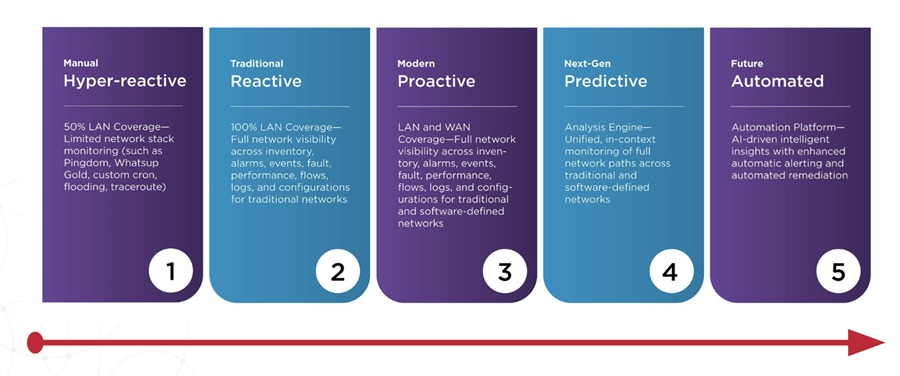A new study conducted by Ipanema Technologies and Easynet found that corporate networks across Europe are experiencing significant performance problems due to blind spots around applications.
The study, Killer Apps 2012, found that performance problems are highly prevalent across networks, with 74% citing enterprise critical applications such as line of business, ERP or CRM, and video-based applications being those most at risk.
In addition, the results unearthed a worrying trend on how such problems are discovered, with user complaints the second most common source of monitoring issues across networks.
Survey highlights include ...
Application performance issues are on the rise across Europe:
- 82% of respondents report speed and responsiveness problems in the past 12 months
- Enterprise, line of business, voice and collaboration applications were cited by 65% of respondents as being the most likely to suffer performance problems
- 43% of companies highlighted that these issues are becoming ‘more frequent’
A lack of visibility when it comes to networked applications:
- 69% do not have visibility of the bandwidth requirements each network application requires
- 55% of respondents rely on the ‘final line of defense’, namely user complaints, as their primary performance metric
- Nearly one in three respondents do not know the number of apps running on their corporate network
In many organizations the network is ‘over provisioned’ suggesting inefficient application of bandwidth:
- 72% of respondents said the network is only used to its full data transmission capacity occasionally or very infrequently
- The vast majority of companies (86%) report increasing bandwidth requirements
Thierry Grenot, CTO at Ipanema Technologies said: “Enterprises need to be more agile in order to reach the business outcomes they expect from strategic IT transformations, such as cloud computing and Unified Communications deployments. The report findings strongly suggest that businesses could benefit from understanding their networks more thoroughly in order to target bandwidth to those applications the business relies on, reducing investment in unnecessary capacity.”
He continued: “Right now there is a ‘perfect storm’ emerging as companies face an explosion of bandwidth requirements from less critical applications, coupled with the need to reduce expenditure. Today’s CIOs require a rock solid yet flexible network which is aligned to the priorities of the organization. That necessitates a more sophisticated approach to networking which includes high levels of visibility and control in order to solve the delivery challenges posed by the complexity of cloud applications.”
Hot Topic
The Latest
According to Auvik's 2025 IT Trends Report, 60% of IT professionals feel at least moderately burned out on the job, with 43% stating that their workload is contributing to work stress. At the same time, many IT professionals are naming AI and machine learning as key areas they'd most like to upskill ...
Businesses that face downtime or outages risk financial and reputational damage, as well as reducing partner, shareholder, and customer trust. One of the major challenges that enterprises face is implementing a robust business continuity plan. What's the solution? The answer may lie in disaster recovery tactics such as truly immutable storage and regular disaster recovery testing ...
IT spending is expected to jump nearly 10% in 2025, and organizations are now facing pressure to manage costs without slowing down critical functions like observability. To meet the challenge, leaders are turning to smarter, more cost effective business strategies. Enter stage right: OpenTelemetry, the missing piece of the puzzle that is no longer just an option but rather a strategic advantage ...
Amidst the threat of cyberhacks and data breaches, companies install several security measures to keep their business safely afloat. These measures aim to protect businesses, employees, and crucial data. Yet, employees perceive them as burdensome. Frustrated with complex logins, slow access, and constant security checks, workers decide to completely bypass all security set-ups ...

In MEAN TIME TO INSIGHT Episode 13, Shamus McGillicuddy, VP of Research, Network Infrastructure and Operations, at EMA discusses hybrid multi-cloud networking strategy ...
In high-traffic environments, the sheer volume and unpredictable nature of network incidents can quickly overwhelm even the most skilled teams, hindering their ability to react swiftly and effectively, potentially impacting service availability and overall business performance. This is where closed-loop remediation comes into the picture: an IT management concept designed to address the escalating complexity of modern networks ...
In 2025, enterprise workflows are undergoing a seismic shift. Propelled by breakthroughs in generative AI (GenAI), large language models (LLMs), and natural language processing (NLP), a new paradigm is emerging — agentic AI. This technology is not just automating tasks; it's reimagining how organizations make decisions, engage customers, and operate at scale ...
In the early days of the cloud revolution, business leaders perceived cloud services as a means of sidelining IT organizations. IT was too slow, too expensive, or incapable of supporting new technologies. With a team of developers, line of business managers could deploy new applications and services in the cloud. IT has been fighting to retake control ever since. Today, IT is back in the driver's seat, according to new research by Enterprise Management Associates (EMA) ...
In today's fast-paced and increasingly complex network environments, Network Operations Centers (NOCs) are the backbone of ensuring continuous uptime, smooth service delivery, and rapid issue resolution. However, the challenges faced by NOC teams are only growing. In a recent study, 78% state network complexity has grown significantly over the last few years while 84% regularly learn about network issues from users. It is imperative we adopt a new approach to managing today's network experiences ...

From growing reliance on FinOps teams to the increasing attention on artificial intelligence (AI), and software licensing, the Flexera 2025 State of the Cloud Report digs into how organizations are improving cloud spend efficiency, while tackling the complexities of emerging technologies ...
